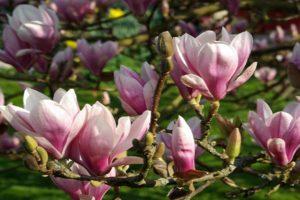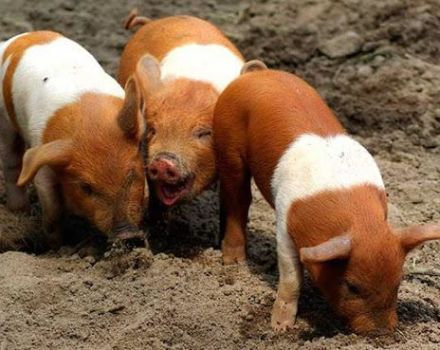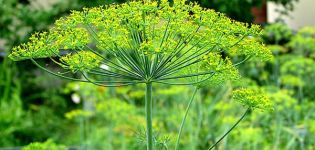Description of the 10 best varieties of summer white flower plant, planting and care
Among the numerous bulbous plants, the white flower stands out for its beauty and tenderness. Many varieties are known to bloom at different times. One of them is a summer white flower, which dissolves its beautiful inflorescences in May. It is widely used in landscaping, making it a desirable plant for gardeners.
Botanical features and description of the plant
Summer white flower is a bulbous plant that blooms contrary to its name, in May. In height, the bush reaches 45-60 centimeters, in width - up to 8 centimeters. Oblong green leaves grow up to 40 centimeters.
Summer white flower is at the same time similar to snowdrop and lily of the valley. The peduncle consists of 3-8 snow-white flowers with green or yellow-green blotches. During ripening, the erect peduncle droops.
Additional Information! The summer white flower has been listed in the Red Book as an endangered species since 1984.
What did the gardeners like so much
Summer white flower is a delicate planting that could not but please flower lovers. Along with other bulbs, it blooms at a time when other flowers are only growing their peduncles. Beautiful plants with bell-shaped inflorescences serve as a decoration for the garden and local area, and also create a spring mood.
Features of application in landscape design
The summer white flower blooms in May. At the same time, late varieties of tulips and daffodils, muscari, hyacinths, primroses, lilies of the valley, and daisies are blooming. They are the same low-growing plants as the white flower, so they will go well without hammering each other.
Bushes can be planted under the crown of trees, as well as in flower beds, alpine hills. The bulbs can be grown in pots by moving them to different locations around the house. In addition, cut flower stalks stand in a vase for about a week.
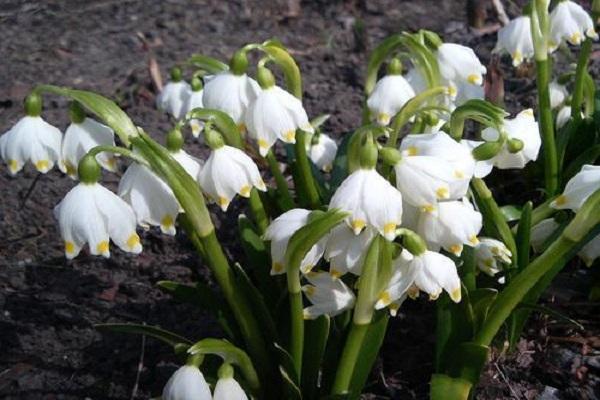
Types and varieties of white flower
More than 40 types of culture are known, then about the most famous of them. The most popular variety of the summer white flower is Graveti Giant.
Spring
The height of the spring snowdrop varies between 25-30 centimeters, its width is about 8 centimeters. Its leaves are green, shiny, grow up to 25 centimeters. It blooms in early spring. The most popular varieties: Carpathicum, Wagneri.
Summer
This species of snow white blooms in May.Most Popular: Gravetye Giant, bred in England. The tips of its petals are framed with golden-emerald splashes. It is used for landscaping the banks of reservoirs, garden plots, local area.
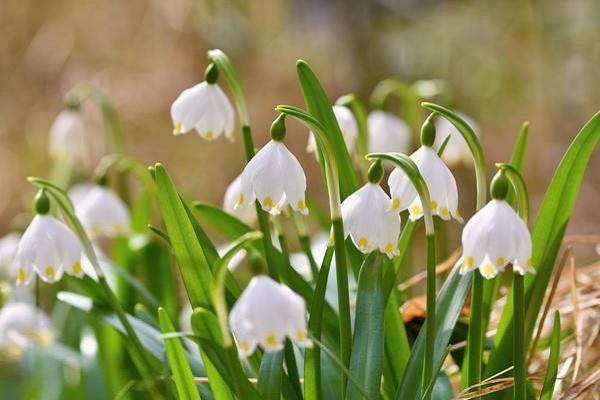
Nice, or Nicene
Bulbous perennial, depending on the variety, grows from 10 to 30 centimeters. The peduncle consists of 1-3 snow-white flowers. It belongs to endangered species, in France it is protected by the state.
Hairy
The height of the shrub is 10-30 centimeters. Peduncles appear in late winter - early spring. They consist of 2-4 bell-shaped flowers of white color, 2 centimeters long.
Valentine
This type of white flower is used as a border plant, since its height does not exceed 15 centimeters. It spreads out 3-5 centimeters in width. White flowers bloom in autumn. One inflorescence contains 1-3 buds.
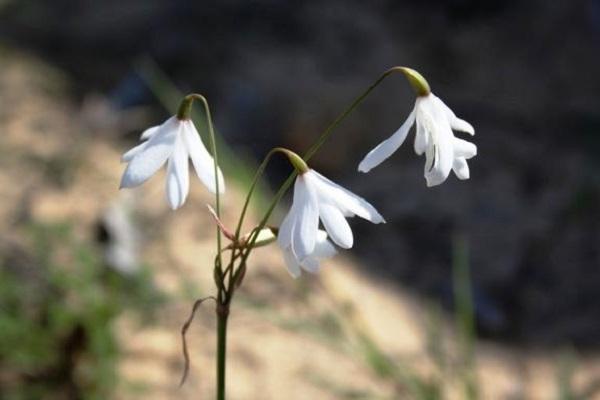
Pink
The undersized shrub barely reaches a height of 10 centimeters, and a width of 5 centimeters. The white flower was named for its pale pink bell-shaped inflorescences that bloom in late summer or early autumn. Florists love to grow this plant in pots, planting several bulbs at once.
Tingitan
The birthplace of the Tingitansky white flower is Morocco It grows up to 20 centimeters in height. The green leaves are narrow, their width is no more than 1 centimeter. The inflorescences are composed of white bells.
Graveti Giant
This is a variety of summer white flower. When grown near a pond, it can reach 50 centimeters in height. The size of bell-shaped flowers is 2-3 centimeters. Graveti Jaint is called a snow flower, because when it blooms, it seems that the ground is covered with snow.
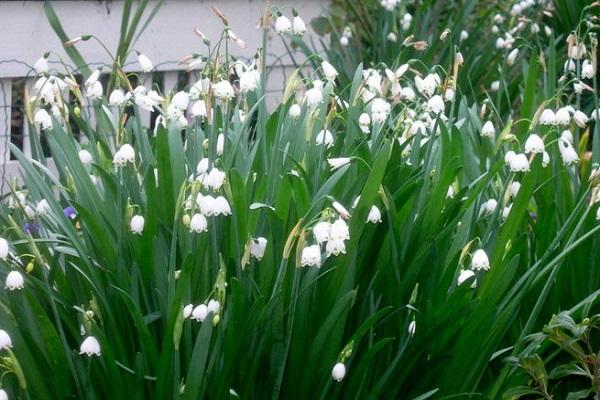
Leukoum Graveti Giant
This is another name for a tall variety. It belongs to the 3rd zone of winter hardiness, withstands frosts from -34 to -40 ° C. Leukoyum Graveti Giant is widely used in landscaping.
Advice! So that after the white flower fades, there is no empty space on the site, they can be planted near plants, the ground part of which appears closer to summer, for example, host, astilbe, ferns.
When and how to plant a plant correctly
The best time for planting a summer white flower is autumn. By spring, the bulb will be strong and ready to bloom. When purchasing planting material, you need to pay attention so that it is free of dents, scratches, stains.
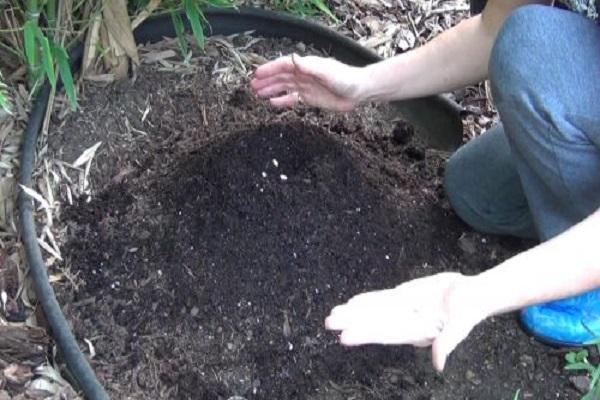
The place is selected semi-shady, preferably near the reservoir. The soil should be fertile, enriched with organic matter. Before planting a white flower, it is dug up, river sand is introduced for water permeability.
Planting summer white flowers does not differ from planting other bulbous plants. Pits are dug, plants are planted in them to a depth of at least 6 centimeters. The larger the bulb, the deeper it is planted in the ground.
Culture care
Caring for the bushes consists in watering, feeding, removing weeds, protecting against diseases and pests. The overgrown bushes are divided and transplanted to a new place.
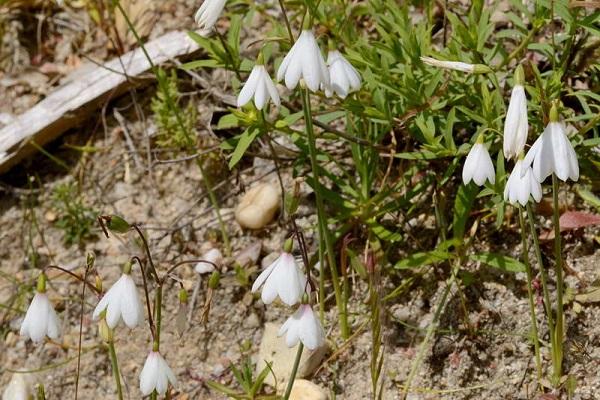
Watering
Summer white flower is a moisture-loving plant. If a lot of snow has fallen during the winter, it will have enough initial moisture. In case of insufficient precipitation, the bushes need to be watered in early spring.
If the plant does not receive enough moisture for development, the plantings will grow low, flowering will be scarce. Subsequently, the snowdrop is watered as the topsoil dries up. In this case, you need to try so that drops of water do not fall on the flowers.
Top dressing
In early spring, bulbous plants are fed with complex fertilizer with a predominance of nitrogen, phosphorus, potassium in the same amount. In the future, nitrogen is excluded, since it promotes the growth of greenery to the detriment of flowering. Phosphorus stimulates the flowering of the white flower, and potassium helps to form and strengthen the bulbs, the ability to winter well.
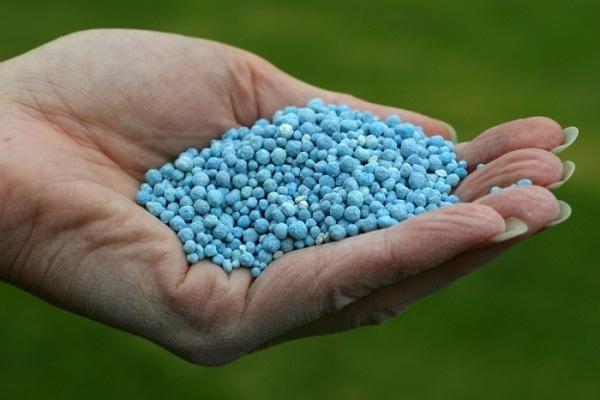
Soil care
Weeds must be constantly removed around the bushes, otherwise they can clog the white flower, as a result of which it will grow undersized. The procedure is best done by hand as the plants are planted close to each other and can be damaged by the use of the tool. For the same reason, the soil is loosened only around the bushes growing along the edges of the flower bed.
Transfer
When bushes are too overgrown, or planted in the wrong place, they are replanted. The procedure is performed after the white flower has faded, that is, when it is at rest. The best time for this is autumn.
Preparing for the winter period
Summer white flower tolerates winter well, so it does not need shelter. Only young plants planted this fall are covered with spruce branches. You can also cover the bushes if a winter with little snow is predicted.
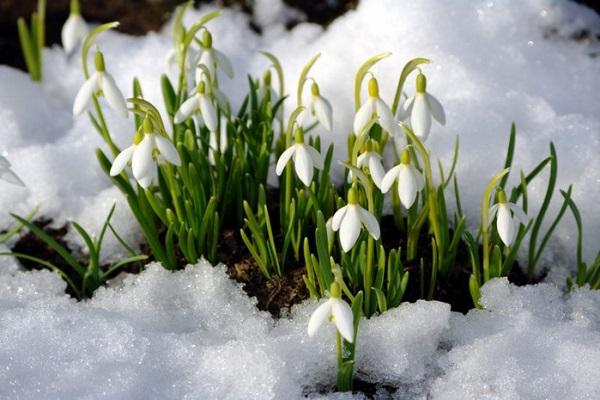
Diseases and pests: protection and treatment
Slugs, mice, moles, scoops and their caterpillars can damage plantings. The ways to deal with them are as follows:
- To get rid of rodents, bait with poison is installed. If this option is unacceptable, you can spray the plantings several times with a decoction of wormwood or mint. Rodents do not tolerate the scent of these plants.
- To combat slugs, traps with dark beer are used, located around the perimeter of the plantings. In addition, soda ash can be sprinkled around the plantings, from which the pests immediately die.
- To get rid of scoop butterflies, several methods are used: they are collected by hand, the bushes are sprayed with an infusion of wormwood and burdock leaves, and chemicals are also used.
In addition to pests, the white flower can be affected by various diseases. Further, the main ones and methods of dealing with them.
- Mold on the bulbs. It can form from too thick plantings. To get rid of the disease, the bulbs are dug up, the affected parts are cut off, and they are sprayed with fungicides.
- Chlorosis. The disease occurs, most often, due to a lack of iron. At the same time, the leaves turn yellow, the edges curl. To get rid of the disease, the soil is enriched with iron.
- Rust. With this disease, growing orange spots appear on the leaf plates. To prevent its appearance, the bushes are sprayed with fungicides. Affected plants are removed from the flower bed.
If most of the plantings are infected with diseases, they need to be dug out, the ground should be treated with antifungal drugs.
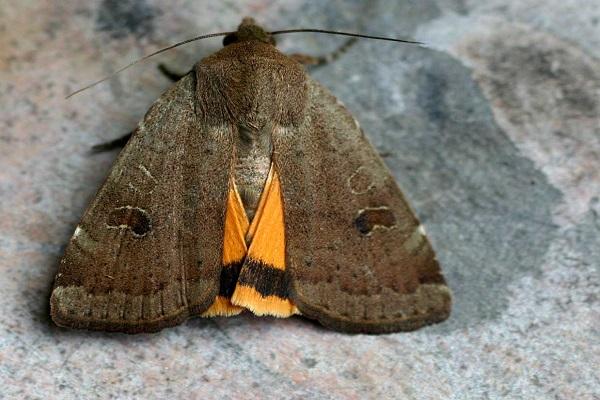
Reproduction methods
There are 2 ways to breed a white flower on the site: by seeds and by dividing the bush. But, the first option is rarely used by gardeners, since flowering occurs only 3-4 years after sowing.
Seeds
To propagate the plant with this option, the seeds are collected and immediately planted in a box, as they quickly lose their germination. In winter, the soil is covered with snow, and the container is placed in a cold place. This is how their natural stratification occurs, which is necessary for the growth and development of seedlings.
Note! Boxes with seedlings should overwinter outdoors in order for natural seed stratification to take place..
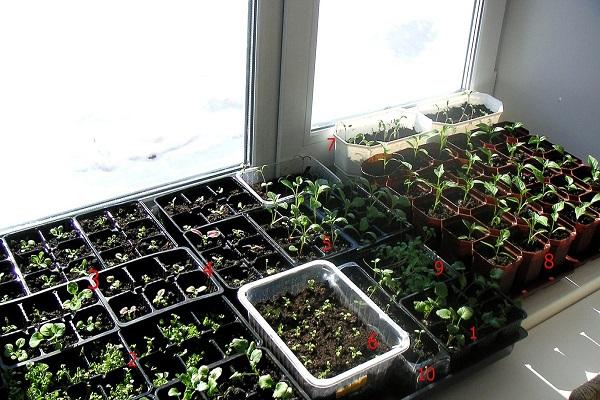
By dividing the bush
5-7 years after planting, the white flower can be propagated by division. To do this, the bush is dug up, the bulbs are carefully separated from one another. The damaged material is removed as it can be the source of contamination of the entire planting. Then each bulb is planted in a separate hole in the flower bed.
